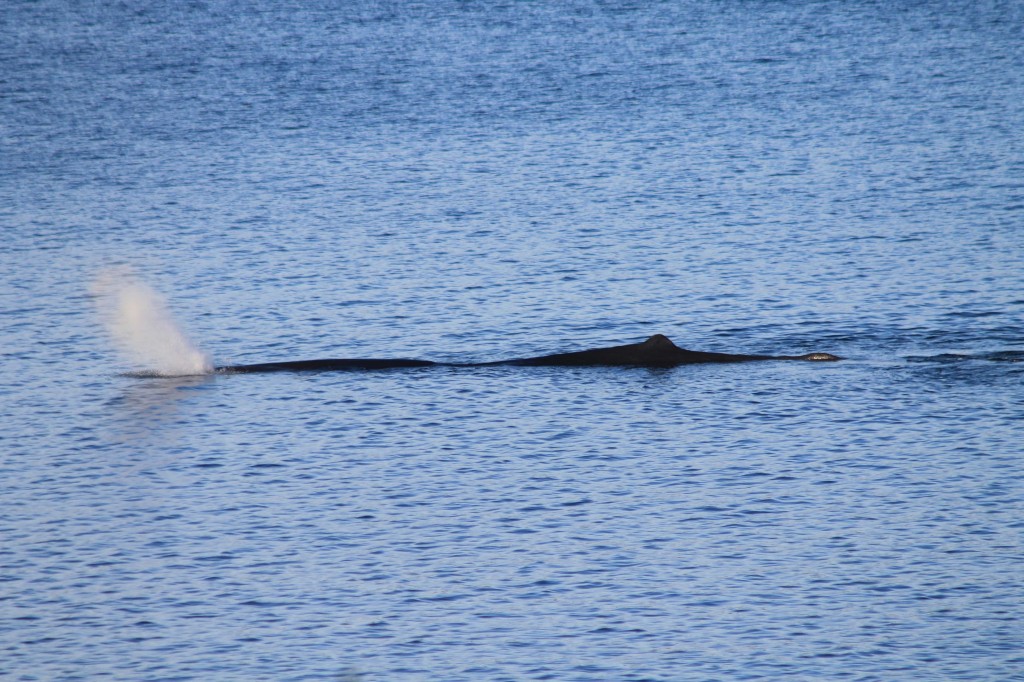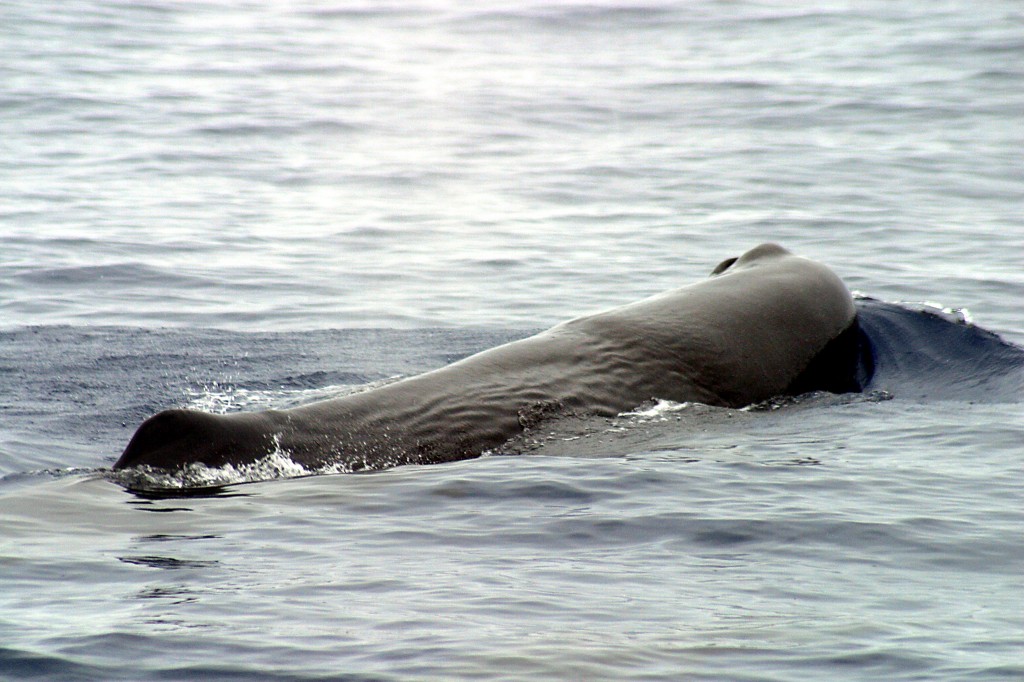One of the most famous whales of all time is Herman Melville’s Moby Dick. This fictional tale was about a sperm whale, usually found living in waters of 1,000 metres or more depth, beyond the continental shelf edge. Despite this habitat preference, one lucky fisherman, Simon Olley, caught more than he bargained for yesterday when he caught glimpse of a 10m long whale milling on the surface of the sea just north of Portpatrick in Dumfries and Galloway.
“Simon has seen various cetaceans around the coast before, and with his experience and the description of the animal it is highly likely that he was watching a sperm whale!” says Kathy James, Sightings Officer for Sea Watch Foundation.
“I have been an angler for many years and fish the sea and rivers and lochs and often see lots of wildlife while fishing – otters, porpoises, seals, jellyfish etc. What struck me about this sighting was the whale was just sort of sitting on the top, at first it wasn’t obvious it was a whale until it moved slightly and I saw it’s very noticeable large and square head and then I heard it take a couple of breaths. There was no obvious dorsal fin either. I watched it for a minute or so before it very gently just disappeared again” says whale-spotter Simon.
A sperm whale. Photo by Dr Peter Evans/ Sea Watch Foundation
“Unfortunately, we do not have any pictures of the animal to fully verify its species” continues Kathy “However, I would urge people along the coast to keep a look out and let us know if they spot anything, however large or small. This is not the first sperm whale sighting off the west coast of Scotland, and in fact, two sperm whales were seen off Skye early in 2014 so people really should take the opportunity to see if they can spot one!”
“In past decades, most records of sperm whales in British waters have been of lone adult males around Scotland mainly around the Northern Isles and the Hebrides. Increasingly, however, adolescent males have occurred in our waters, sometimes in groups of 5-10 individuals.” adds Sea Watch Director, Dr Peter Evans. “The increased occurrence of winter and spring sightings in Scottish waters could be a reflection of climate change, if their main prey, squid, have become more abundant locally in recent years, resulting in animals staying through the winter to feed rather than travelling into lower warmer latitudes.”
 One of two sperm whales sighted off Skye in 2014. Photo by Catherine Atkins/ Sea Watch Foundation.
One of two sperm whales sighted off Skye in 2014. Photo by Catherine Atkins/ Sea Watch Foundation.
Sperm whales are amongst the largest mammal species in the world. Adult males can weigh in at up to 45 tonnes – the iconic London Routemaster double decker bus weighs less than 8 tons, unladen!
According to Sea Watch’s national database, there have been only around one hundred separate sightings in British waters in the last forty years, with the largest group on record being of 20 animals seen off Mousa in the Shetland Islands in 2007.
Sea Watch run a UK-wide Recommended Boat Operator Scheme and one of their recommended operators is running exploratory trips specifically to look for sperm whales in February next year. The cruises will be priced on a non-profit basis to cover costs and data will be supplied to Sea Watch Foundation to help them with their monitoring. Any interested parties should approach Hebridean Whale Cruises through their Facebook page.

























